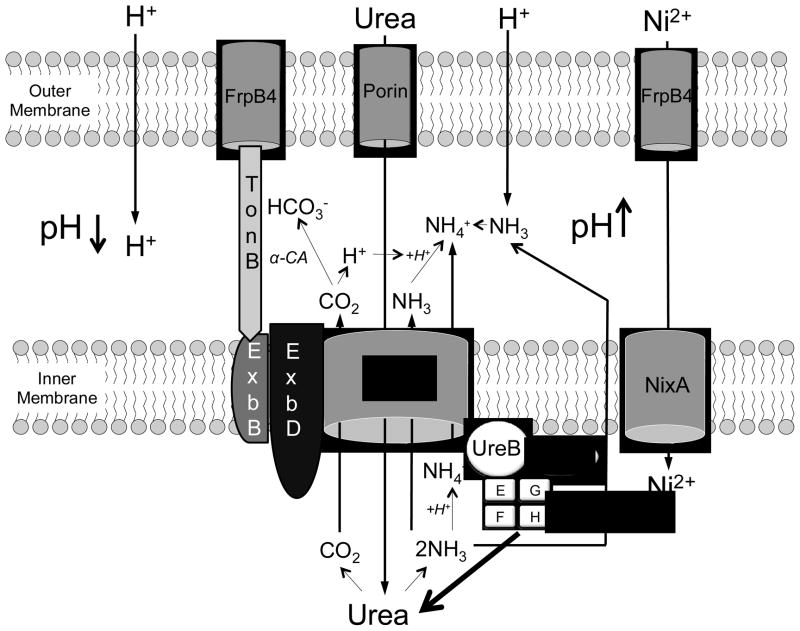Figure 6.
The role of ExbD in the acid acclimation response in H. pylori. In acidic media, the periplasmic pH is maintained at ~6.1 by acid acclimation. At this pH, the membrane potential is ~−100 mV, about 100 mV less negative then at pH 7.4. The ExbB/ExbD/TonB complex energizes the uptake of nickel through the TonB-dependent transporter FrpB4 by responding to the change in membrane potential and increasing the flux of nickel through NixA into the cytoplasm. Once in the cytoplasm, nickel incorporation, required for urease activation, is aided by cytoplasmic urease accessory proteins UreE-H. Simultaneously, protonation of UreI leads to its opening. Decreased periplasmic pH is also sensed by HP0165 and subsequent activation of its cognate response regulator, HP0166 (not shown in the model), leading to mobilization of urease and its nickel insertion accessory proteins at the inner membrane. Urea moves through UreI, where it is hydrolyzed at the inner membrane to CO2 and 2NH3. The products of urea hydrolysis move back through UreI into the periplasm. CO2 is converted to bicarbonate, catalyzed by a periplasmic, inner membrane localized carbonic anhydrase. The periplasm is then buffered by the products of urea hydrolysis, allowing H. pylori, a neutralophile, to survive and grow in an acidic environment.

